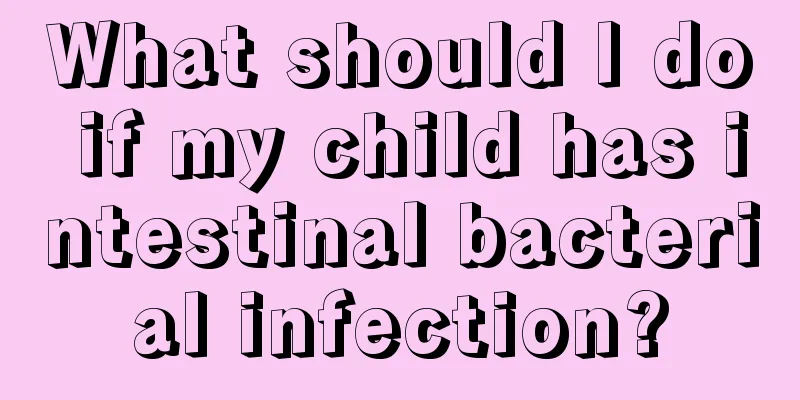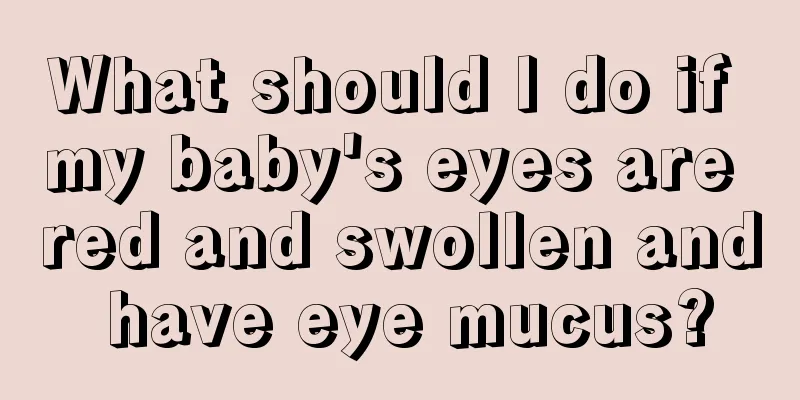What should I do if my child has intestinal bacterial infection?

|
Parents of today's children always take good care of them, but many problems of intestinal bacterial infections arise. For example, overeating, giving too much food to children or even gastrointestinal infections can cause this. Many parents don’t know the cause of their children’s diarrhea and how to deal with it. They are very worried and don’t know what is good and what is bad. Let me introduce to you what to do if your child has intestinal bacterial infection? 1. Treatment 1. The key to acute bacillary dysentery is to control infection, provide fluid therapy and symptomatic treatment. (1) Antimicrobial therapy: Since the widespread use of sulfonamides and antibiotics, the resistance rate of Shigella dysenteriae has increased year by year. The bacteria are resistant to most drugs, including sulfonamides, chloramphenicol, tetracycline, streptomycin, furazolidone (Furazolidone) and ampicillin (ampicillin) (see Etiology). According to the results of current drug sensitivity tests, the sensitive and effective drugs are as follows: Quinolones are the first choice for those who are more sensitive. As for the toxic reactions of quinolones in children, many clinical data at home and abroad show that the use of quinolones in children is not consistent with that in experimental animals, and shows considerable safety. The Chinese Journal of Pediatrics (1996) organized a national expert discussion and concluded that quinolones should not be banned for children, but that indications should be strictly controlled, the dosage should not exceed 10-15 mg/kg per day, and the course of treatment should not exceed 7 days. ①Norfloxacin (, norfloxacin): 10-15 mg/(kg·d), orally in 3 divided doses. The course of treatment is 5 to 7 days. ②Ciprofloxacin (Ciprofloxacin): 10-15 mg/(kg·d), taken orally in 3 divided doses. It can also be diluted with isotonic sodium chloride or glucose in 100-300 ml for intravenous drip, with an infusion time of no less than 30 minutes. ③ Pipemidic acid: 15-30 mg/(kg·d), orally taken in 3 divided doses. It is a second-generation quinolone, with inferior efficacy than the above-mentioned third-generation quinolone, relatively more side effects, and has tended to be eliminated. I believe that the above introduction of children's intestinal bacterial infections should be clear to everyone, and everyone should know how to deal with children's intestinal infections, as well as certain methods to deal with diet and bacterial and viral infections. For the health of the child, you can also judge how to treat and deal with the child based on the various symptoms the child exhibits. |
<<: What is the best way to treat anxiety disorders in children?
>>: How do famous doctors teach you how to prevent and treat childhood asthma?
Recommend
What are the consequences of cerebral palsy in children?
Some children are born with cerebral palsy, but t...
What foods can’t babies eat when they have a fever? Parents, please take note!
If a baby has a fever, parents must pay great att...
Children's toenails peeling
Toenails can often reflect the health of the body...
How much do you know about the symptoms of mycoplasma tracheitis?
Pediatric bronchitis is very common among childre...
What are the ways to recover children's vision loss?
Nowadays, various digital products not only attra...
At what age is it best for children to change their teeth?
Children grow up slowly and their body functions ...
Can rhinitis cause coughing in children?
Children with chronic rhinitis cannot clear their...
What are the traditional Chinese medicine anti-inflammatory drugs for children?
The anti-inflammatory drugs we often talk about a...
Can a newborn baby have nipples squeezed?
Many families have the habit of squeezing the nip...
Children's language sensitive period
Children will have a language sensitive period, a...
Why do children suddenly have nosebleeds in summer?
Children rarely have nosebleeds before the age of...
Why do children's eye bags turn purple?
Children's eyes are generally delicate, espec...
What are the reasons for newborns to urinate frequently?
Many newborns urinate very frequently. If a newbo...
Why does my baby's hands and feet shake after falling asleep?
Some careful parents will find that their babies&...
Generally speaking, it is best to add complementary food to babies at a few months.
At how many months does a baby need to add comple...









